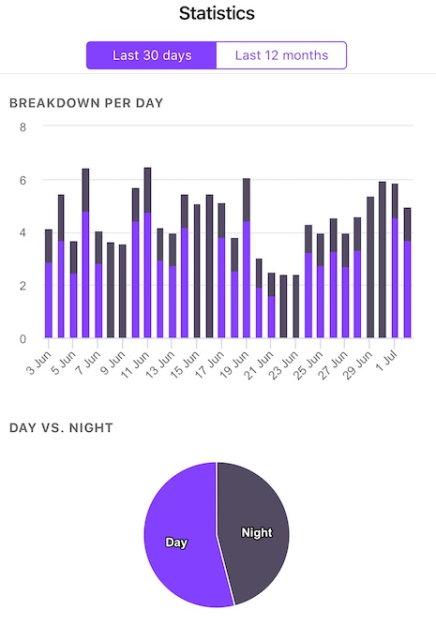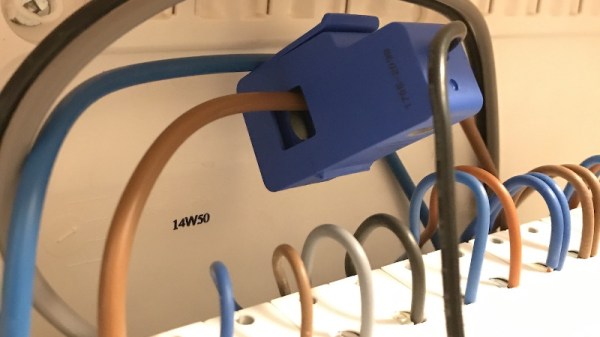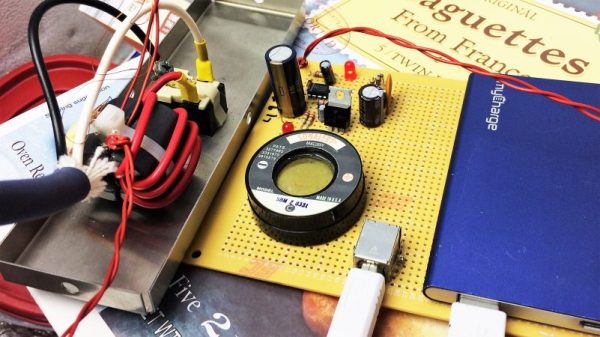Do humanoid robots dream of electric retirement? Who knows, but maybe we can ask Boston Dynamics’ Atlas HD, which was officially retired this week. The humanoid robot, notable for its warehouse Parkour and sweet dance moves, never went into production, at least not as far as we know. Atlas always seemed like it was intended to be an R&D platform, to see what was possible for a humanoid robot, and in that way it had a heck of a career. But it’s probably a good thing that fleets of Atlas robots aren’t wandering around shop floors or serving drinks, especially given the number of hydraulic blowouts the robot suffered. That also seems to be one of the lessons Boston Dynamics learned, since Atlas’ younger, nimbler replacement is said to be all-electric. From the thumbnail, the new kid already seems pretty scarred and battered, so here’s hoping we get to see some all-electric robot fails soon.
current transformer11 Articles
Never Forget To Turn On The Cooker Hood Again
The cooker hood is a wonderful invention for removing excess fumes and steam from the kitchen. But like all electrically-powered devices, it only works when it is turned on. This was the problem facing [Peter], whose family are enthusiastic cooks who frequently forget to hit that switch. His solution? An automatic cooker hood switch that comes on when the cooker is in use, and stays on long enough afterwards to fully dissipate the fumes.
At its heart is a current transformer on the 3-phase stove power line, and we’re treated to a lesson in reading from these devices with an Arduino. They have a shunt resistor across which to produce a voltage, and their AC output is placed upon a reference DC voltage to supply the microcontroller pin. The impedance is quite high, so when the sensor had to be placed a distance from the microcontroller it necessitated an op-amp buffer. The readings then cause the Arduino to trigger a pair of relays to switch on or off the cooker hood. We can imagine that the family kitchen is thus a much pleasanter environment for it.
Cookers can also provide quite a hazard when they are left on. To that end, we’ve also featured a cooker alarm in the past.
Header image: Pbroks13, CC BY-SA 3.0.
Building A Safe ESP32 Home Energy Monitor
The first step to reducing the energy consumption of your home is figuring out how much you actually use in the first place. After all, you need a baseline to compare against when you start making changes. But fiddling around with high voltage is something a lot of hackers will go out of their way to avoid. Luckily, as [Xavier Decuyper] explains, you can build a very robust DIY energy monitoring system without having to modify your AC wiring.
 In the video after the break, [Xavier] goes over the theory of how it all works, but the short version is that you just need to use a Current Transformer (CT) sensor. These little devices clamp over an AC wire and detect how much current is passing through it via induction. In his case, he used a YHDC SCT-013-030 sensor that can measure up to 30 amps and costs about $12 USD. It outputs a voltage between 0 and 1 volts, which makes it extremely easy to read using the ADC of your favorite microcontroller.
In the video after the break, [Xavier] goes over the theory of how it all works, but the short version is that you just need to use a Current Transformer (CT) sensor. These little devices clamp over an AC wire and detect how much current is passing through it via induction. In his case, he used a YHDC SCT-013-030 sensor that can measure up to 30 amps and costs about $12 USD. It outputs a voltage between 0 and 1 volts, which makes it extremely easy to read using the ADC of your favorite microcontroller.
Once you’ve got the CT sensor connected to your microcontroller, the rest really just depends on how far you want to take the software side of things. You could just log the current consumption to a plain text file if that’s your style, but [Xavier] wanted to challenge himself to develop a energy monitoring system that rivaled commercial offerings so he took the data and ran with it.
A good chunk of his write-up explains how the used Amazon Web Services (AWS) to process and ultimately display all the data he collects with his ESP32 energy monitor. Every 30 seconds, the hardware reports the current consumption to AWS through MQTT. The readings are stored in a database, and [Xavier] uses GraphQL and Dygraphs to generate visualizations. He even used Ionic to develop a cross-platform mobile application so he can fawn over his professional looking charts and graphs on the go.
We’ve already seen how carefully monitoring energy consumption can uncover some surprising trends, so if you want to go green and don’t have an optically coupled electricity meter, the CT sensor method might be just what you need.
Continue reading “Building A Safe ESP32 Home Energy Monitor”
Snitch On Your AC Devices With Stolen Power
Low power devices are always intriguing, as they open up possibilities for applications with the need to operate remotely, or for very long periods without attention. There are all manner of techniques for powering such devices, too, such as using solar panels, super capacitors, or other fancy devices. The Micro Power Snitch is one such device, which can report wirelessly on your AC-powered appliances.
The device is built around a tiny ARM microcontroller and an RFM69 radio module. The entire circuit is run by leeching power from an AC current transformer, wrapped around one of the power lines of an AC appliance. When an appliance draws over the minimum threshold current (500W on 230VAC, 250W on 115VAC), the device sends a packet out, which can be received and logged at the other end.
The best part of this project, however, is the writeup. The project is split into an 8-part series, breaking down the minutiae of the concepts at work to make this possible. It’s a great primer if you’re interested in designing low-power devices.
We’ve seen some of [jcw]’s power research before – such as this guide to the effects of code on power consumption.
[Thanks to Ronald for the tip!]
Junkbox Freezer Alarm Keeps Steaks Safe
A fully stocked freezer can be a blessing, but it’s also a disaster waiting to happen. Depending on your tastes, there could be hundreds of dollars worth of food in there, and the only thing between it and the landfill is an uninterrupted supply of electricity. Keep the freezer in an out-of-the-way spot and your food is at even greater risk.
Mitigating that risk is the job of this junkbox power failure alarm. [Derek]’s freezer is in the garage, where GFCI outlets are mandated by code. We’ve covered circuit protection before, including GFCIs, and while they can save a life, they can also trip accidentally and cost you your steaks. [Derek] whipped up a simple alarm based on current flow to the freezer. A home-brew current transformer made from a split ferrite core and some magnet wire is the sensor, and a couple of op-amps and a 555 timer make up the detection and alarm part. And it’s all junk bin stuff — get a load of that Mallory Sonalert from 1983!
Granted, loss of power on a branch circuit is probably one of the less likely failure modes for a freezer, but the principles are generally applicable and worth knowing. And hats off to [Derek] for eschewing the microcontroller and rolling this old school. Not that there’s anything wrong with IoT fridge and freezer alarms.
Getting Data Out Of Air-Gapped Networks Through The Power Cable
If you are an organisation that is custodian of sensitive information or infrastructure, it would be foolhardy of you to place it directly on the public Internet. No matter how good your security might be, there is always the risk that a miscreant could circumvent it, and perform all sorts of mischief. The solution employed therefore is to physically isolate such sensitive equipment from the rest of the world, creating an air gap. Nothing can come in and nothing can go out, or so goes the theory.
Well, that’s the theory, anyway. [Davidl] sends us some work that punches a hole in some air-gapped networks, allowing low-speed data to escape the air gap even if it doesn’t allow the reverse.
So how is this seemingly impossible task performed? The answer comes through the mains electrical infrastructure, if the air gap is bridged by a mains cable then the load on that mains cable can be modulated by altering the work undertaken by a computer connected to it. This modulation can then be detected with a current transformer, or even by compromising a UPS or electricity meter outside the air gap.
Of course, the Hackaday readership are all upstanding and law-abiding citizens of good standing, to whom such matters are of purely academic interest. Notwithstanding that, the article goes into the subject in great detail, and makes for a fascinating read.
We’ve touched on this subject before with such various techniques as broadcast radio interference and the noise from a fan, as well as with an in-depth feature.
How Many Watts Are You Using?
One of the best smart home hacks is implementing an energy monitor of some kind. It’s easy enough to say that you’re trying to save energy, but without the cold hard data, it’s just talk. Plus, it’s easy and a great way to build up something DIY that the whole family can use.
[Bogdan] built up a simple whole-apartment power monitor from scratch over the weekend, and he’s been nice enough to walk us through the whole procedure, starting with picking up a split-core CT sensor and ending up with a finished project.
The brains of his project are an ESP8266 module, which means that he needed to adapt the CT sensor to put out a voltage that lies within the chip’s ADC range of 0 V to 3.3 V. If you’re undertaking an energy monitor project, it’s as easy as picking the right burden resistor value and then shifting the ground-centered voltage up by 1.6 V or so. We say it’s easy, but it’s nice to have a worked example and some scope shots. The microcontroller reads the ADC frequently, does a little math, and you’re done. Continue reading “How Many Watts Are You Using?”

















